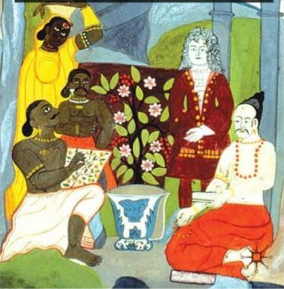MOEF to develop a bio-culture park in Bhubaneswar; MOEF to get a digital copy of the early 18th century book Jardin de Lorixa by a Frenchman about plants of Odisha
Bhubaneswar- Cuttack- Puri, CENTER & ODISHA, ENVIRONMENT, Khordha, Parks, Sites in and around Bhubaneswar June 1st. 2011, 4:56pmUpdate: Jairam Ramesh has written to the the French ambassador regarding getting a digital copy of Jardine de Lorixa. Following is an excerpt from a report in inewsone.com.
Union Environment Minister Jairam Ramesh Thursday asked for help from the French envoy in India to get a digitised copy of a manuscript on plants in Orissa written by a Frenchman in 1725.
‘I have been told that the oldest document based on a scientific survey of plants in Orissa was written in the year 1725 by a Frenchman called Nikolas L. Empereur,’ said the letter to French Ambassador to India Jerome Bonnafont.
The document is currently available at the Natural History Museum in Paris.
‘I wonder whether we could get a digitized copy of this manuscript. Any expenses incurred in this regards will be borne by us,’ Ramesh said in the letter …
Following is an excerpt from a report in Hindu.
The Ministry of Environment and Forests (MoEF) proposes to develop a “bio-cultural park” on 10 acres here. It will be the first of its kind in the country.
… Environment and Forests Minister Jairam Ramesh said flowers associated with all religions and traditions of the country would find a place in the park.
Mr. Ramesh said: “Chief Minister Naveen Patnaik has responded positively to make land available for the purpose. Within the next two-and-half years, you will have India’s first bio-cultural park. Cultural traditions are not Hindu tradition only. Cultural traditions such as tribal, Buddhist, Jain, Sikh, Islamic, and Christian would be followed while choosing species. The bio-cultural park will not just be a monument of flowers, but also will be reflective of our divergent cultural traditions.”
Thje MoEF would develop the park and then hand over it over to the State government. The idea was to draw strength from Indian culture for the cause of conservation of bio-resources. Traditionally, biological sources were being conserved in the form of sacred grooves, ‘nakshatravanams,’ ‘navagraha vatika,’ concept of panchvati and use of timber from ecologically important species for religious purposes.
… the park would be developed on the lines of ‘nakshatravanam …
Following is from http://www.orissalinks.com/archives/6592.
the Ministry would make efforts to get a digital copy of Jardin de Lorixa, considered to be the earliest scientific documentation of traditional/ indigenous knowledge about plants of Orissa, of which only one manuscript is available in Natural History Museum Paris (France).
Following are excerpts on the Jardin de Lorixa.
- From http://www.h-net.org/reviews/showrev.php?id=12120: "Jardin de Lorixa ("Flora of Orissa") authored by a certain L’Empereur, an outstanding work consisting of 725 double-folio paintings of 722 plant species"
- From http://www.circulatingknowledge.ugent.be/index.php?id=16&type=file: " *Jardin de Lorixa* a lesser known herbal commissioned by a French surgeon in Bengal in the early 18th century."
- From http://www.conservationandsociety.org: "a long forgotten herbal known as Le Jardin de Lorixa ( The garden of Orissa ) and credited to a surgeon named Nicolas L’Empereur in the employ of the French Compagnie des Indes"
- The book "Relocating Modern Science Circulation and the Construction of Scientific Knowledge in South Asia and Europe : Seventeenth to Nineteenth Centuries" by Kapil Raj (Maître de conférences at the École des Hautes Études en Sciences Sociales in Paris) has one of its six sections dedicated to this. This section is titled: "I. SURGEONS, FAKIRS, MERCHANTS, AND CRAFTSMEN : MAKING L’EMPEREUR’S JARDIN IN EARLY MODERN South Asia" and has the following chapters.
- 1. From a Forgotten Codex in a Paris Archive
- 2. To Eastern India in the Seventeenth Century
- 3. The Origins of the Jardin de Lorixa
- 4. Making the Jardin de Lorixa
- 5. The Jardin de Lorixa and the Hortus MaLibaricus
- 6. L’Empereur’s Jardin Comes to Paris
- 7. And Gets Anonymized in the Jardin du Roi
Following is from the cover of Jardine De Lorixa.


